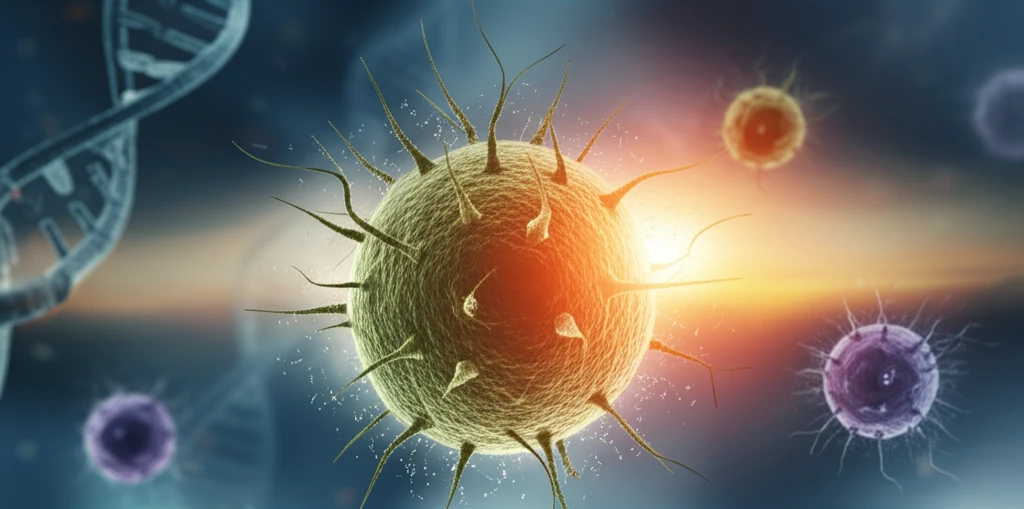
Unlock Your Body's Potential: Apicidin and the Future of Oral Cancer Treatment
"Could a surprising source – a simple peptide – hold the key to revolutionizing how we fight oral squamous cell carcinoma? Learn how apicidin is rewriting the rules."
For years, scientists have been tirelessly searching for more effective and less harmful ways to treat cancer. Oral squamous cell carcinoma (OSCC), one of the most common types of oral cancer, often requires aggressive treatments like surgery, radiation, and chemotherapy. While these methods can be life-saving, they also come with significant side effects that can greatly impact a patient's quality of life. This has fueled the urgent need for novel therapeutic strategies that can target cancer cells more precisely, leaving healthy tissues unharmed.
Enter apicidin, a cyclic peptide HDAC inhibitor that has shown promise in preclinical studies. HDAC inhibitors are a class of drugs that work by disrupting the activity of histone deacetylases (HDACs), enzymes that play a crucial role in regulating gene expression. By inhibiting HDACs, these drugs can alter the way genes are turned on and off, potentially leading to the death of cancer cells. What makes apicidin particularly interesting is its ability to selectively target certain HDACs, potentially minimizing the side effects associated with broader-spectrum HDAC inhibitors.
Recent research has shed light on the potential of apicidin to combat OSCC. A study published in Oncology Letters explored the effects of apicidin on murine OSCC cells, both in vitro (in the lab) and in vivo (in living organisms). The results of this study suggest that apicidin could be a powerful tool in the fight against oral cancer, offering a new avenue for treatment and improved outcomes for patients.
Apicidin: Targeting the Root of the Problem

The Oncology Letters study investigated the effects of apicidin on murine oral squamous cell carcinoma cells. Researchers examined how apicidin affected cell proliferation and the expression of specific HDACs. They also used a mouse model to assess the in vivo effects of apicidin on tumor growth. The results were compelling: apicidin effectively inhibited cell growth in AT-84 murine OSCC cells and selectively reduced the expression of HDAC8.
- Apicidin significantly reduced HDAC8 expression in AT-84 cells.
- It induced apoptosis and autophagy in treated cells.
- Tumor growth was notably inhibited (up to 46% reduction in mice).
- Immunohistochemistry confirmed the inhibition of cell proliferation in tumor tissues.
A Promising Future for Oral Cancer Treatment
These findings suggest that apicidin holds significant promise as a therapeutic agent for OSCC. Its ability to selectively inhibit HDAC8 expression, induce apoptosis and autophagy, and suppress tumor growth in vivo makes it a compelling candidate for further investigation. While more research is needed to fully understand its mechanisms of action and potential side effects, apicidin offers a ray of hope for a more targeted and effective approach to treating oral cancer.
